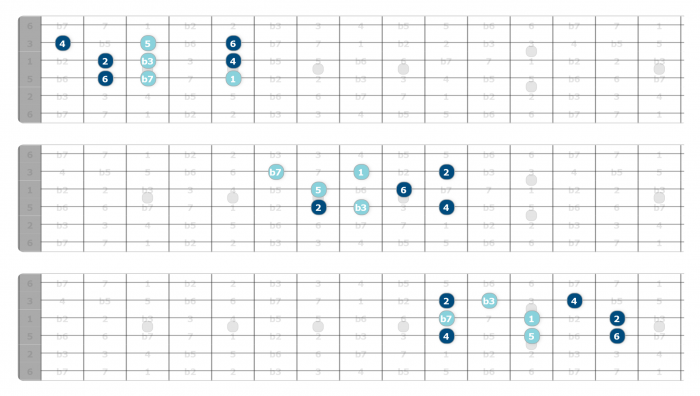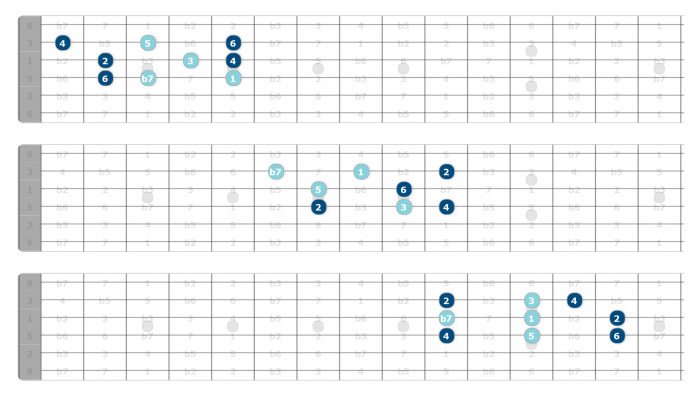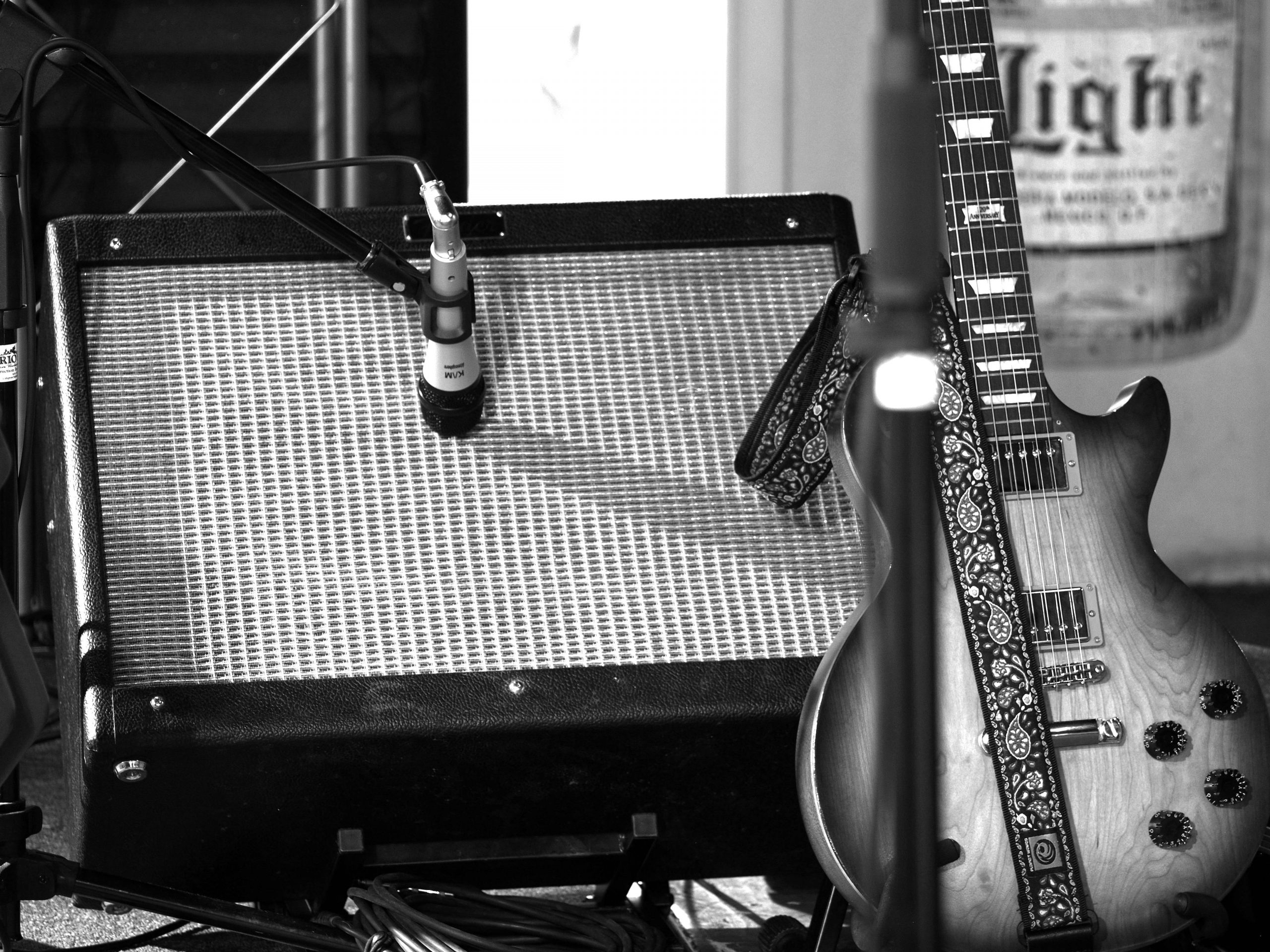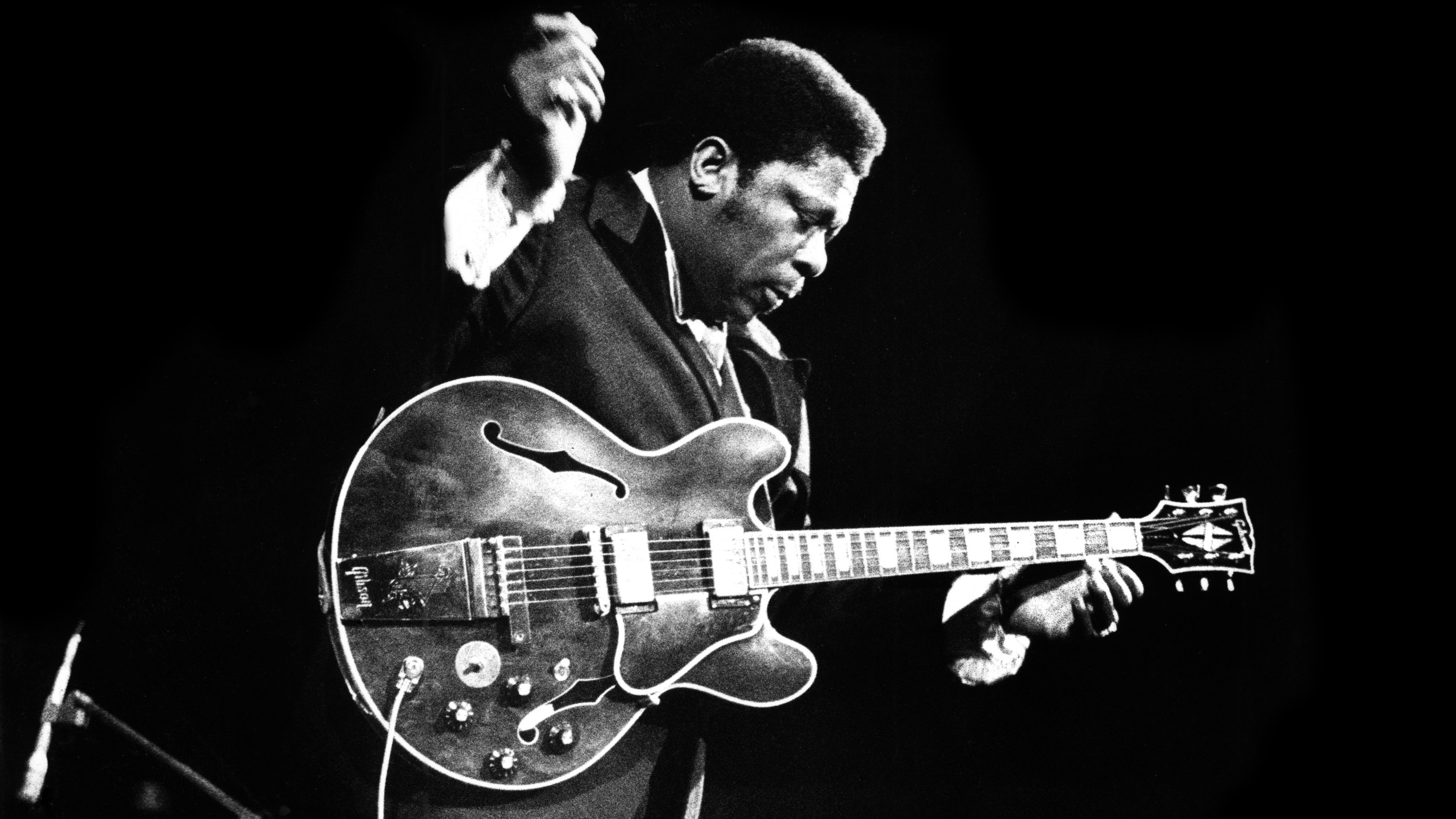What we need to do now is approach our arpeggios, scales and modes through formulas instead of any kind of time-consuming patterns or shapes. The four-note clusters we’ve learned are the basis of many of the formulas you will use on guitar, and if you know them by reflex then it’s simply a question of adding in a few more intervals.
Let’s go through a few formulas so you can get the hang of this.
Dorian – 1, 2, b3, 4, 5, 6, b7
If you want to play the Dorian scale over some kind of minor chord (m7, m9, m11, m13) or a Dorian chord progression, think of it like this:
1, b3, 5, b7 + 2, 4, 6
If you know the 1, b3, 5, b7 well enough, you’ll be free to concentrate on combining them with the other intervals and creating that Dorian sound.
Here’s a diagram to help you.

Remember that these are NOT scale shapes, so don’t turn them into patterns. The idea is to always CHOOSE the intervals you want to play, which means not playing something if you don’t know what interval it is. This will soon become second nature and your attention will turn to the sound you want to create.
Mixolydian – 1, 2, 3, 4, 5, 6, b7
Let’s have a look at a major scale. The Mixolydian is great for soloing over dominant chords. This time we’re using the following formula:
1, 3, 5, b7 + 2, 4, 6
Again, you should know the 1, 3, 5, b7 part by reflex in order to focus on adding in the other intervals.

Note that we only changed one interval from the Dorian scale to get the Mixolydian scale—this has to be more efficient than learning 5 or even 7 patterns for each of those scales!
As you can probably hear in your own playing, the advantage of using formulas is that you don’t sound like you’re playing scales, and never even have to pass through that stage as you would if you were learning scale patterns.
Stepping Out
Once you feel comfortable finding intervals near the 4-note clusters, start to ‘discover’ other parts of the fretboard but take things very slowly. I say discover because I want you to work out what intervals you’re playing outside these patterns, so that as you accomplish this your reward will be to let yourself play those intervals. Make sure you know where the 1, 3, 5, and 7 intervals are at all times because this will stop you getting lost. You can never sound lost if you’re playing the 1, 3, 5, or 7 of any scale or arpeggio. With this basis, you can now develop what will set you apart from virtually any other guitarist: your phrasing.
You’re now free to work with formulas as oppose to patterns, which involves a lot of work (most of which is just breaking the habit of relying on scale patterns) but will set you free in terms of improvisation. Once you’ve gotten the hang of this, I would encourage you to do everything in your head, which means not writing out any kind of aid in the form of a diagram.
Take it slowly and enjoy the world of triad soloing.



